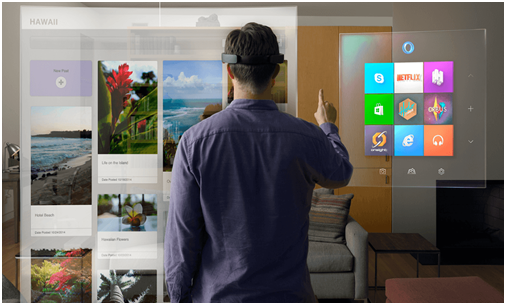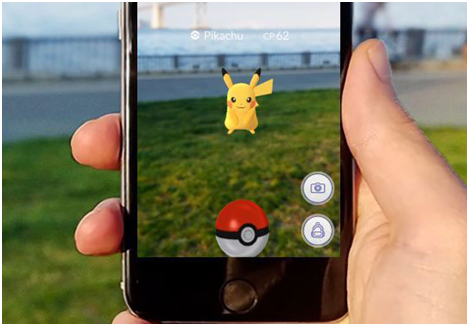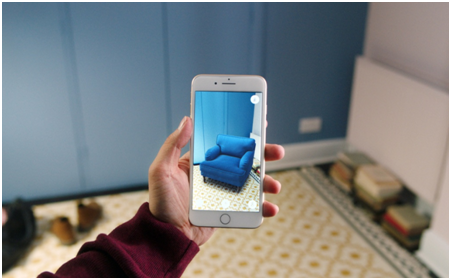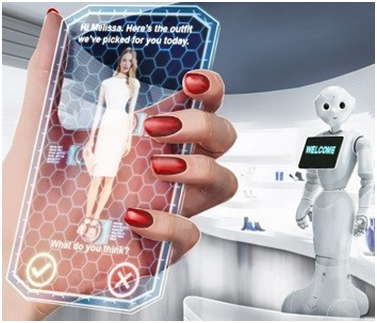Virtual Reality and Augmented Reality
Virtual Reality (VR) is basically, a three-dimensional experience which is generated by the computer which makes you feel like the environment you are in is real. For instance, watching a 3D movie makes you feel like you are amidst the scene. VR puts a user in an isolated reality, i.e. it creates a fantasy world for the user.
Augmented Reality (AR) is also a three-dimensional experience that combines digital information with your own environment. AR uses the existing surroundings to create a 3D reality user experience. The computer algorithm in AR uses sensors and markers to spot a real-time position of an object and determine the location of a stimulated one.
Benefits of Using Augmented Reality
Now, let’s take a look at the advantages of AR in business.
The New FAD
Augmented Reality (AR) is in its infancy stage and hence, is the new craze amongst the generation. Everyone wants to enjoy a piece of this new experience. This was seen when the Pokémon Go game took over the masses. Because of its uniqueness, you can create a buzz amongst your users, something that your competitors might not have.
Repeat Engagement
For users to keep coming back to get updates on your product or business, repetitive engagement is of key importance. With the help of an AR platform, the users can keep coming back to your website or app, which allows repetitive advertisements. This exposes the brand again and again, thus lodging itself in the minds of the user.
Three-dimensional Thinking
Allows Content Personalization
Personalization in an app or a product automatically scores goody points with the users. A standard photograph or video is boring. AR can play a big role in personalizing content. This makes it a valuable marketing tool.
Experiencing Product in a New E-Commerce Setting
Users can experience e-commerce products in a virtual environment. For example, with the help of a virtual mirror, you can try on glasses and choose the frame that best suits your face. The app asks you take a picture of yourself and then choose frames that you think best suit you. Isn’t that wonderful?
Upgrading the Education and Training Experience
AR offers unlimited possibilities of transforming the teaching and learning experience. AR can offer a unique cognition path with immersive real-life simulations. It can offer a real psychological and physical experience and gives an authentic virtual experience that can be implemented in real life scenarios.
For example, a student of dentistry can operate on a tooth and perform a root canal surgery without injuring patients and at the same time get a real feel of the experience.
Augmented Reality and Virtual Reality Revenue Forecast
As per MediaPost, the VR revenue in 2017 was $1.6 billion which is forecasted to reach $11.5 billion in 2021. Meanwhile, AR has collected $975 million in 2017 and it’s forecasted to reach $15.8 billion by 2021.
Last year VR comprised 56% of revenue compared to 44% for AR. By 2021, it will be the reverse, with VR accounting for only 20% of revenue and AR 80%.
Reference site: https://www.mediapost.com/publications/article/311078/vr-ar-revenue-forecast-79-billion-in-4-years.html
Cost of an AR Application
If you wish to build an AR application, you need to determine three components to understand the costing:
- Place where additional reality should appear
- Information that the user is supposed to get
- Medium through which you are going to provide this experience
You need to determine the presentation of the information, i.e. text, picture, video or audio and how you would incorporate a 3D effect to receive the desired effect.
Present and Future of Augmented Reality
AR plays a key role in driving customer engagements over time, especially in business sectors. With the increasing number of phones and tabs and the hardware to support this functionality, AR is the next big hit with expanding businesses.
At the moment, AR allows you to use your visual and auditory sense, but in the near future it will offer sensors such as smelling, touching and feeling. AR will be found in all business market spheres; commerce, manufacturing, travel and tourism, healthcare, real estate and banking.







